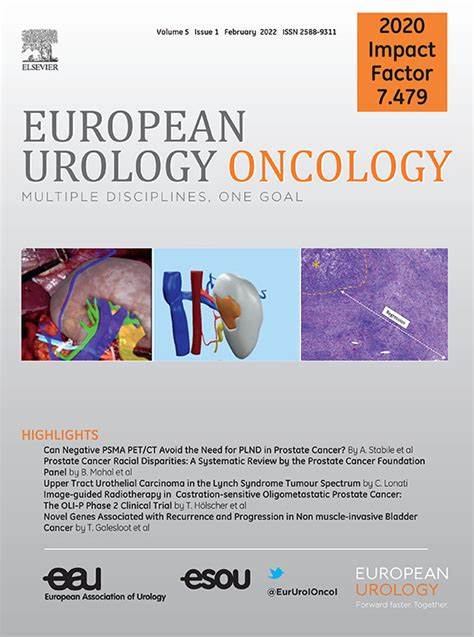A Phase 1b/2 Study of Talazoparib and Axitinib in Patients with Advanced Clear-cell Renal Cell Carcinoma
IF 9.3
1区 医学
Q1 ONCOLOGY
引用次数: 0
Abstract
Inactivation of the VHL gene leads to HIF accumulation, angiogenesis, and genomic instability. In this phase 1b/2 study, we assessed the safety and antitumor activity of axitinib combined with talazoparib in treatment-refractory clear-cell renal cell carcinoma (ccRCC). Patients received escalating doses of talazoparib with a fixed standard dose of axitinib in a 3 + 3 design. This was followed by a dose expansion phase in a separate cohort. The primary endpoints were determination of the recommended phase 2 dose (RP2D) and the objective response rate. From 2020 to 2023, 23 patients with ccRCC were enrolled: 15 in the dose escalation cohort and eight in the dose expansion cohort. The RP2D was identified as talazoparib 1 mg daily with axitinib 5 mg twice daily. At the RP2D, 13/14 patients discontinued treatment because of disease progression. Median progression-free survival was 6.1 mo (95% confidence interval 3.5–8.4). Thirteen patients (56%) experienced at least one grade 3+ treatment-emergent adverse event (AE), while nine (39%) experienced at least one treatment-related grade ≥3 AE, of which diarrhea, nausea, and anemia were the most common. This is the first report on a VEGFR-targeted tyrosine kinase inhibitor combined with a PARP inhibitor for ccRCC. While our results demonstrate the safety of this strategy, the combination did not meet a predefined efficacy threshold for continued evaluation. This trial is registered on Clinicaltrials.gov as NCT04337970.
Talazoparib和Axitinib治疗晚期透明细胞肾细胞癌的1b/2期临床研究
VHL基因失活导致HIF积累、血管生成和基因组不稳定。在这项1b/2期研究中,我们评估了阿西替尼联合塔拉唑帕尼治疗难治性透明细胞肾细胞癌(ccRCC)的安全性和抗肿瘤活性。在3 + 3设计中,患者接受逐步递增剂量的talazoparib和固定标准剂量的axitinib。随后在一个单独的队列中进行剂量扩大阶段。主要终点是确定推荐的2期剂量(RP2D)和客观反应率。从2020年到2023年,23例ccRCC患者入组:15例剂量递增组,8例剂量扩大组。RP2D确定为talazoparib 1 mg / d + axitinib 5 mg / d, 2次/ d。在RP2D中,13/14的患者因疾病进展而停止治疗。中位无进展生存期为6.1个月(95%可信区间为3.5-8.4)。13例患者(56%)至少发生1例治疗相关3+级不良事件(AE), 9例患者(39%)至少发生1例治疗相关≥3级不良事件,其中腹泻、恶心和贫血最为常见。这是首个关于vegfr靶向酪氨酸激酶抑制剂联合PARP抑制剂治疗ccRCC的报道。虽然我们的结果证明了该策略的安全性,但该组合并未达到持续评估的预定义功效阈值。该试验在Clinicaltrials.gov上注册为NCT04337970。
本文章由计算机程序翻译,如有差异,请以英文原文为准。
求助全文
约1分钟内获得全文
求助全文
来源期刊

European urology oncology
Multiple-
CiteScore
15.50
自引率
2.40%
发文量
128
审稿时长
20 days
期刊介绍:
Journal Name: European Urology Oncology
Affiliation: Official Journal of the European Association of Urology
Focus:
First official publication of the EAU fully devoted to the study of genitourinary malignancies
Aims to deliver high-quality research
Content:
Includes original articles, opinion piece editorials, and invited reviews
Covers clinical, basic, and translational research
Publication Frequency: Six times a year in electronic format
 求助内容:
求助内容: 应助结果提醒方式:
应助结果提醒方式:


